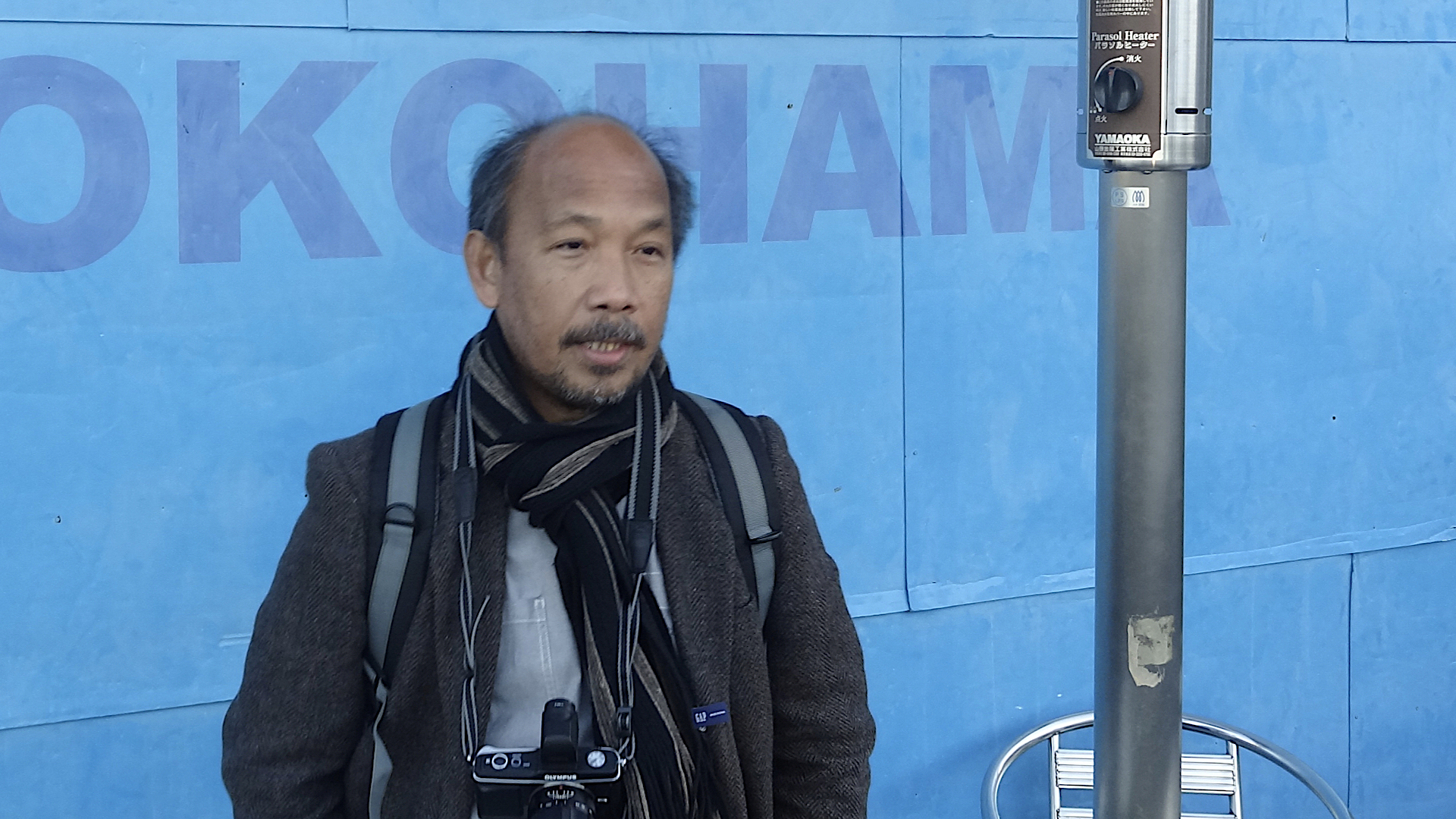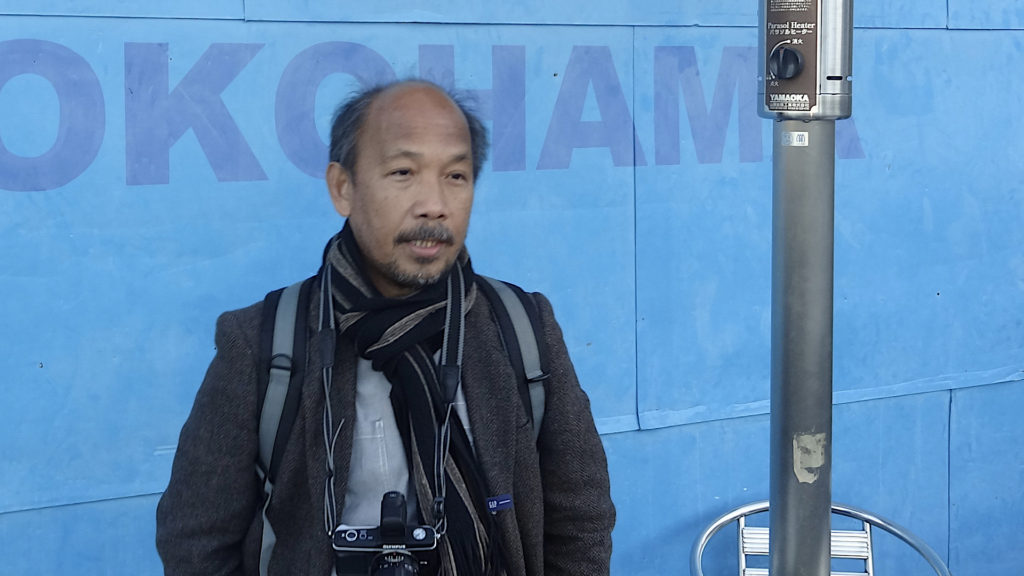[ad_1]

SNA (Yokohama) — Ishikawacho Station on the JR Negishi Line is well known to tourists, gourmets, and weekend strollers. Located less than four kilometers south of Yokohama Station, it is a useful starting point to spend a leisurely Sunday. Once out of the station, almost everyone turns right, towards the sea coast. Depending on their inclination, they head to Chinatown’s eateries, Motomachi’s high-end shopping street, or the seaside Yamashita Park. But if, by mistake, you turn left instead, and pass under the elevated Metropolitan Expressway, you will enter a totally different world made of drab grey buildings, liquor stores, cheap diners and flophouses.
This is Kotobukicho, or what used to be one of Japan’s biggest and most notorious yoseba (the place where day laborers gather to get work). At its peak, during the Bubble years, the couple dozen blocks that comprise the district were home to about 5,000-6,000 workers mainly employed in construction, roadwork, or as stevedores in the port of Yokohama. Today, however, no more than 1,000 active laborers are left, as most of the 6,500 residents are too old and sick to work.
During the 1980s, a sizable part of Kotobukicho’s population consisted of foreigners–especially Koreans and Filipinos.
One member of the latter group, Rey Ventura, went on to chronicle life in the yoseba and Filipino migration to Japan. He is the author of the groundbreaking 1992 memoir Underground in Japan.
Today, Ventura is a university teacher, but he has not forgotten his old home–or “crime scene” as he jokingly calls it–where some of his friends still live. For the purposes of writing this article, he was kind enough to guide me around the district.
“Recently, I haven’t been here at 4:00 or 5:00 am when they gather in the hope of getting a job, but as far as the daytime population is concerned they are all quite old and sick,” Ventura says. “They no longer have the money and energy to go to the bars for drinks and fun.”
The place where Ventura used to live is still standing, but some of the area’s other main features are gone, including the labor center on Kotobukicho’s main intersection. They have built a social welfare center in its place in order to keep up with the district’s new demographic situation.
“Right now the local authorities’ main worry is how to look after this increasingly old population,” Ventura says. “Many of them came here looking for work in their late teens and have lived in Kotobuki for the last 40-50 years.”
Many of the local residents now depend on welfare payments to survive. The city of Yokohama used to require that welfare applicants have a residential address–thus keeping most flophouse lodgers from getting help–but in the early 1990s the local day laborer union and civil rights groups successfully lobbied to do away with this rule.
“One of the things I admire about the Japanese system is that they actually take care of people in need,” Ventura says. “There’s a shelter house for the homeless here, and a variety of daycare centers and old people’s facilities. They try to help them in many ways.”
Across the street from the welfare center, Ventura introduces me to one relic from the past: the only public toilet left in the neighborhood. Inside we discover graffiti next to the sink. It’s written in Tagalog. Ventura reads the phrase and bursts out laughing because he knows the guy who wrote it (he signed it). “It reads, ‘You are a shit, not me’, he explains.”
On another corner of the intersection stands a grocery store–the main pole of attraction in the neighborhood, and arguably its liveliest place, as there is always a group of people gathering in front of it, drinking and chatting.
“All these places, including the grocery store, are owned by Koreans,” Ventura says. “You could say this is Yokohama’s unofficial Korean Town. Of course, these are the younger generations. They have all adopted a Japanese name. They are hard workers and make quite some money, but they don’t show their wealth.”
In honor of the old days, Ventura proposes a toast. So we grab a drink and stand at the corner, like everybody else. Ventura sips a one-cup cheap sake, like an old-school tachinbo (day laborer).
“I remember when this place used to swarm with people looking for a job early in the morning,” he says, “and after work everybody would gather in the streets drinking, chatting, and having a good time.”
The current scene couldn’t be more different. Many of the guys around us are old, poor, sick, and most of all they look lonely.
“Things are changed so much now, but I believe the system won’t disappear because the big companies will always need day workers. There may be ups and downs, but the economy requires them.”
Next Ventura takes me to the oldest flophouse remaining in the area. Its rooms are only two-tatami wide (less than four square meters).
Currently, there are about 8,000 cheap rooms for rent in Kotobukicho. Many of them are used by the city of Yokohama to house welfare recipients. The flophouse’s gloomy-looking exteriors are in stark contrast with the colorful Yokohama Hostel Village, a self-styled “backpacker and budget travelers inn.”
“Apart from the young foreign tourists who stay here because it’s so cheap, you hardly hear foreign-sounding people anymore,” Ventura points out.
When Ventura arrived in Yokohama in 1988, many Filipinos saw Japan as a promised land. “Many things have changed since,” he says. “Our economy has been growing very fast and the middle class has greatly expanded. Now if you walk around Manila at night you can see many young people having fun. They have cell phones and other gadgets. I had never seen something like that before. When your life is that good you lack the kind of drive and strong desire needed to leave your family and friends to work abroad.”
However, even though circumstances have changed, many Filipinos still choose to migrate (before the pandemic, 10% of the country’s GDP, or about US$20 billion, used to come from the money migrants sent home) and many of them see the convenience of moving here.
“For one thing, Japan is only a four-hour flight away from the Philippines,” Ventura says. “Even more importantly, as the Filipino community is now well established, most immigrants have some relative or friend here who can help them settle down. Of course, the kind of work the new immigrants do is vastly different from my generation. Now there are nurses and caregivers, IT professionals, and English teachers, besides traditional manual workers such as housekeepers. On the other hand, coming to Japan as an unskilled worker has become very difficult, and getting an entertainer visa is almost impossible.”
“The entertainers you can still find now are the old Japayukis who came back in the day. They are now married to Japanese nationals. But they are all obasan (middle-aged women) now. They moonlight as caregivers or work in factories and supermarkets during the day, and at night they work in a bar as entertainers. All these ladies, more often than not, are the main breadwinners in the house because their husbands are elderly guys who are now retired or are not earning enough. There’s a wide age gap between them–about 15-20 years. They have to keep working hard because they have children and they have to pay for their education. Also, many of them are now separated from their partners. This is an ongoing trend as there’s a high divorce rate among them. Their life is very hard.”
Work aside, the truly new development, according to Ventura, has been in tourism. “Ten years ago, the Japanese government liberalized the visa policy for Southeast Asian tourists. Now we can freely travel to Japan and before the pandemic more than 100,000 Filipinos visited Japan every year.”
We wrapped up our tour in nearby Odori Park, where Ventura used to buy second-hand goods at the Sunday flea market.
“Even here everything has changed,” he says. “The trees that used to stand in the middle of the square have been removed, and the place now looks much better.” Indeed, the current park looks very different from the ugly place Ventura had described in his 1992 book.
While heading back to the station, Ventura reflects on how things have turned out for him and the Filipino community in Japan.
“Currently there are about 300,000 Filipinos. These are the official figures, but many of them married Japanese nationals so their children are not counted as Filipinos. If you include them I would say we are closer to half a million. We can also invite our families to Japan. So our community is getting bigger and deeply embedded in Japanese society. Not only we don’t stand out as much as before but we have become part of the local community; we have been assimilated and many of us are even applying for Japanese citizenship. Moreover, our children have become ‘invisible’ and are not treated as foreigners anymore.”
For breaking news, follow on Twitter @ShingetsuNews
[ad_2]
Source link
















